The question of when CBAM will be implemented is of great importance for global trade and sustainability. Additionally, CBAM (Carbon Border Adjustment Mechanism) is designed to reduce carbon emissions. Therefore, it will be gradually applied to high-emission sectors. In this way, producers will be encouraged to adopt environmentally friendly production models. Moreover, the European Union plans to fully implement it by 2026. In this case, importers will be required to pay a carbon tax. Additionally, sectors such as steel, cement, aluminum, and fertilizers will be prioritized. For this reason, technologies that reduce carbon emissions are being promoted. Furthermore, companies are making new investments to meet sustainability standards. This will lead to the widespread adoption of low-emission production processes. Moreover, CBAM introduces new regulations in global trade. In this case, exporting countries will need to reassess their environmental policies. Additionally, low-carbon production will provide a competitive advantage.
Table of Contents
- Which Sectors Are Prioritized in CBAM?
- Which Sectors Does CBAM Cover?
- What Are the Steps of the CBAM Process?
- Who Pays the Carbon Border Tax?
- What Is the CBAM Certificate?
- CBAM Example
- Conclusion
- Frequently Asked Questions
Which Sectors Are Prioritized in CBAM?
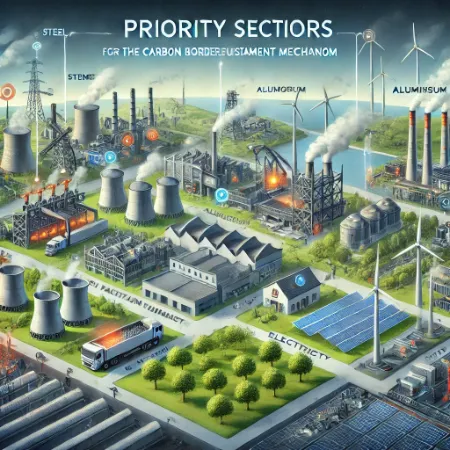
The question of which sectors are prioritized in CBAM is of great importance in achieving carbon emission reduction goals. Additionally, sectors with high carbon emissions will be subject to regulation in the first phase. Therefore, cement, steel, aluminum, fertilizer, and electricity production are prioritized. In this way, industries with high carbon intensity will become more sustainable. Moreover, CBAM aims to accelerate the green transformation in industry. In this case, sectors with high energy consumption must comply with regulations. Additionally, the use of renewable energy plays a critical role in reducing carbon emissions. For this reason, companies are developing alternative solutions to reduce fossil fuel consumption. Furthermore, importers and manufacturers aim to minimize their carbon footprint, driving eco-friendly trade. Additionally, low-carbon technologies are being encouraged to support industrial transformation. In this case, innovation and green energy investments are becoming increasingly important.
Which Sectors Does CBAM Cover?
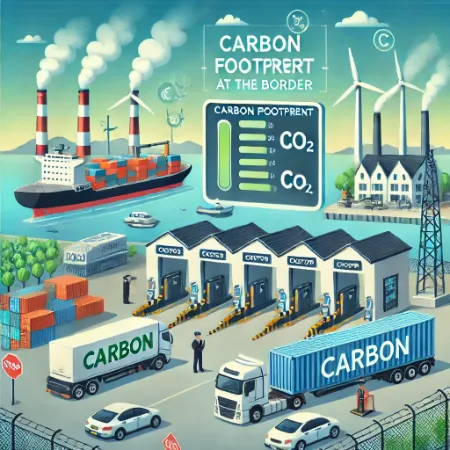
The question of which sectors CBAM covers is of great importance in carbon regulations. Additionally, sectors with high carbon emissions are the primary targets of this regulation. Therefore, cement, steel, aluminum, and fertilizer production are included in the initial phase. In this way, industries with high carbon intensity will be directed towards environmentally friendly processes. Moreover, electricity production is also among the sectors covered by CBAM. In this case, renewable energy projects that reduce fossil fuel use are prioritized. Additionally, manufacturers seeking to lower their carbon footprint are investing in new technologies. For this reason, sustainable production and energy efficiency are becoming strategic priorities. Furthermore, importers are shifting towards lower-emission products due to carbon pricing. In this way, global trade is adapting to the green economy approach. Additionally, new sectors may be added to CBAM regulations in the coming years.
What Are the Steps of the CBAM Process?
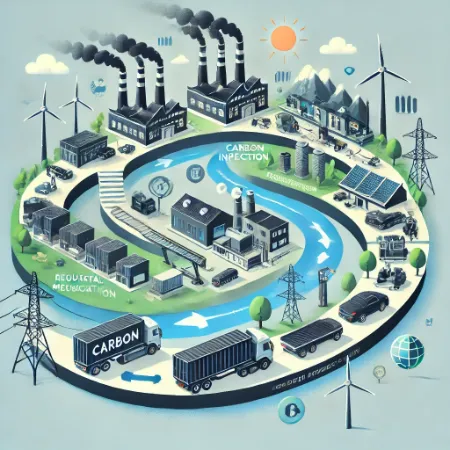
The question of which sectors CBAM covers is of great importance in carbon regulations. Additionally, sectors with high carbon emissions are the primary targets of this regulation. Therefore, cement, steel, aluminum, and fertilizer production are included in the initial phase. In this way, industries with high carbon intensity will be directed towards environmentally friendly processes. Moreover, electricity production is also among the sectors covered by CBAM. In this case, renewable energy projects that reduce fossil fuel use are prioritized. Additionally, manufacturers seeking to lower their carbon footprint are investing in new technologies. For this reason, sustainable production and energy efficiency are becoming strategic priorities. Furthermore, importers are shifting towards lower-emission products due to carbon pricing. In this way, global trade is adapting to the green economy approach. Additionally, new sectors may be added to CBAM regulations in the coming years.
Who Pays the Carbon Border Tax?
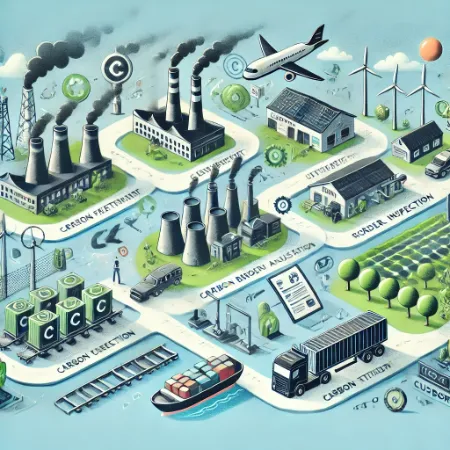
The question of who pays the carbon border tax is highly significant for international trade. Additionally, this tax is applied to sectors with high carbon emissions. Therefore, the carbon footprint of imported products is calculated and taxed accordingly. In this way, environmentally friendly production methods are encouraged. Moreover, companies exporting to the European Union are required to pay this tax. In this case, carbon-intensive industries face increased costs. Furthermore, importers pay an additional tax based on the carbon content of the products. For this reason, companies engaged in sustainable production gain a competitive advantage. Additionally, manufacturers using renewable energy pay lower taxes. In this way, investments that reduce carbon emissions are promoted. Moreover, the transition to low-carbon production is accelerating. In this case, the adoption of technologies that reduce fossil fuel use is increasing. Furthermore, the carbon tax requires exporters to reconsider their cost calculations.
What Is the CBAM Certificate?
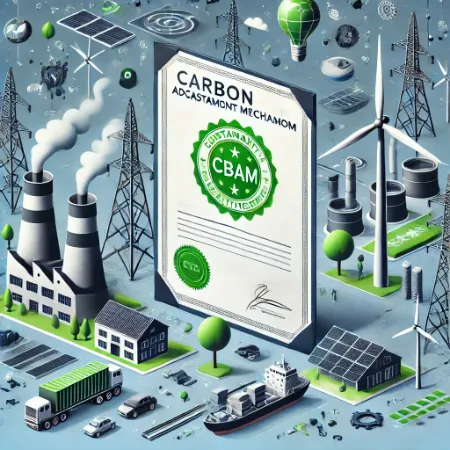
The question of who pays the carbon border tax is highly significant for international trade. Additionally, this tax is applied to sectors with high carbon emissions. Therefore, the carbon footprint of imported products is calculated and taxed accordingly. In this way, environmentally friendly production methods are encouraged. Moreover, companies exporting to the European Union are required to pay this tax. In this case, carbon-intensive industries face increased costs. Furthermore, importers pay an additional tax based on the carbon content of the products. For this reason, companies engaged in sustainable production gain a competitive advantage. Additionally, manufacturers using renewable energy pay lower taxes. In this way, investments that reduce carbon emissions are promoted. Moreover, the transition to low-carbon production is accelerating. In this case, the adoption of technologies that reduce fossil fuel use is increasing. Furthermore, the carbon tax requires exporters to reconsider their cost calculations.
CBAM Example
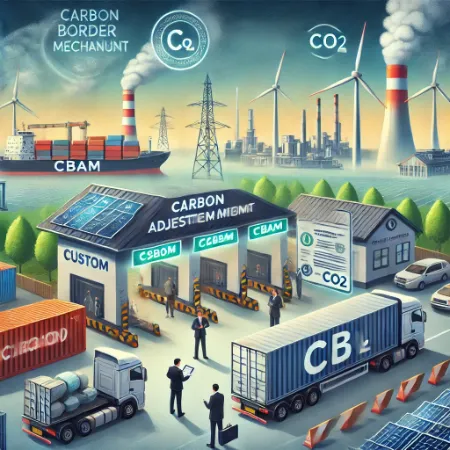
A CBAM example is a system that demonstrates how the Carbon Border Adjustment Mechanism is applied. Additionally, this regulation introduces cost adjustments for sectors with high carbon emissions. Therefore, industries such as cement, steel, and aluminum are included in this framework. In this way, importing countries encourage environmentally friendly production through carbon taxes. Moreover, the European Union plans to fully implement this mechanism by 2026. In this case, the costs of high-carbon-emission products will increase. Additionally, businesses engaged in low-carbon production will gain a competitive advantage. Furthermore, CBAM affects global trade, giving green-transition companies new business opportunities. Moreover, technologies that reduce carbon emissions are supported under CBAM. In this case, energy efficiency in production processes is being improved. Additionally, carbon calculations within the CBAM process are regularly monitored and reported. For this reason, emission reduction targets are based on concrete data.
Conclusion
In conclusion, the CBAM implementation promotes sustainable production by reducing carbon emissions. Additionally, carbon-intensive sectors must comply with this regulation. The question of when CBAM will be implemented depends on the environmental policies of each country. Therefore, businesses engaged in low-carbon production gain a competitive advantage. In this way, renewable energy and green technologies are becoming increasingly important. Moreover, the answer to the question of when CBAM will be implemented has been set for 2026 in the European Union. In this case, countries are investing in environmentally friendly production processes. Additionally, carbon tax applications directly impact the industrial sector. For this reason, manufacturers are developing new strategies to reduce their carbon footprint. The question of when CBAM will be implemented may vary by country, but global transformation is inevitable.
Frequently Asked Questions
What is CBAM? CBAM (Carbon Border Adjustment Mechanism) is a trade regulation aimed at reducing carbon emissions.
Which sectors does CBAM cover? It applies to carbon-intensive sectors such as steel, cement, aluminum, fertilizers, and electricity production.
What does it mean to be carbon neutral? It refers to offsetting the amount of carbon emitted through carbon offset projects.
What is the main purpose of CBAM? Its primary goal is to reduce carbon emissions and promote sustainable production processes.
Who pays the carbon tax under CBAM? Importers and companies that produce high-carbon-emission products are responsible for paying the tax.
How can the carbon footprint be reduced? It can be minimized through renewable energy use, energy efficiency, sustainable transportation, and recycling.
How does CBAM affect exports? Companies engaged in green production gain advantages, while high-carbon producers face additional costs.
What incentives does CBAM offer? It supports renewable energy, carbon reduction technologies, and sustainable production processes.
How can individuals reduce their carbon footprint? Using public transportation, energy-efficient appliances, water conservation, and recycling can help reduce it.
What long-term impact will CBAM have? It will contribute to reducing global carbon emissions by promoting environmentally friendly production.







